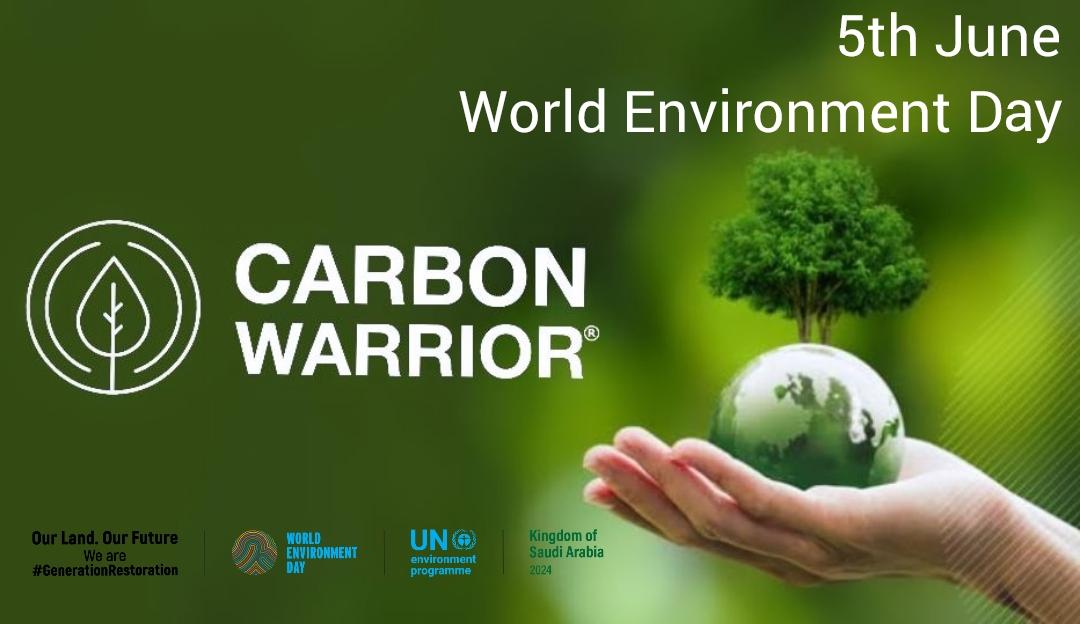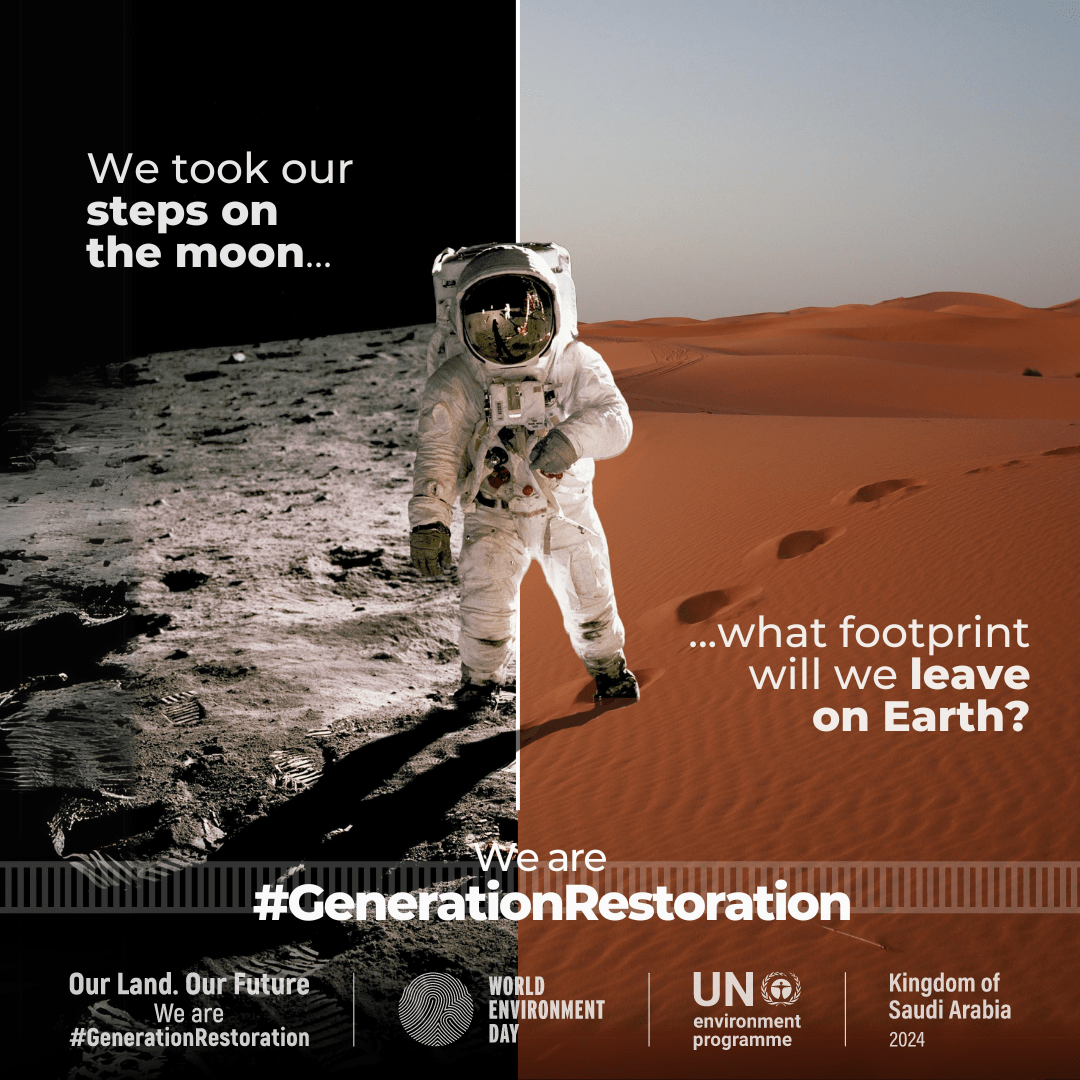
Showing Steel the Timber Framed Door –
How Bendigo Truss Are Promoting the Carbon Warrior Message
This article was written by FTMA’s Kat Welsh
The UN’s World Environment Day (WED) is on June 5th. The annual event was created by the United Nations Environment Program (UNEP) and has been occurring since 1973. It exists to raise awareness for environmental matters, promote global actions taken by governments, businesses, and individuals, to fight climate change, reduce pollution, save endangered species, and much more.
This year’s WED is being hosted in Saudi Arabia, and is highlighting land restoration, desertification & drought resilience. Rescuing lands that have been devastated by farming and de-forestation to assist climate reparation, is crucial. These areas provide vital opportunities to reharness a landscape not under threat of soil erosion, support a cooler climate, aid water retention, and provide inhabitants a sustainable source of living.

Carbon Warrior has been following projects around the world that are all about increasing re-forestation and sustainable forestry. Our main purpose is to promote the use of renewable timber in the built environment to drive down the carbon in the atmosphere – this industry is the key component to balancing the increasing need for housing and construction, with the degradation of our climate.

For the month of June, we will be highlighting FTMA fabricators who are spreading this message and making a difference. Firstly, is James Thomson, from Bendigo Truss Plant. James and Bendigo Truss staff go beyond with their actions of responsibility when it comes to the business. They are acutely aware of the issues of climate and the things faced by the industry – making moves to do what they can.
James and his team have managed to bring a steel builder over to the timber framing side of the fence, by advocating for the environment, informed choices, and the benefits of treated timber and engineered wood products. “We promoted the Carbon Warrior approach,” James said, “it’s sustainability, it’s carbon encapsulating.” James provided a quote, and when he recently met with the builder, talked about using T2 timber if termites were the issue, and demonstrated exactly what it meant to lock carbon away, rather than emitting chemicals from steel manufacturing. “They’ve embraced it, in saying that this is the way we should go, we should move right away from steel. They’ve had a couple of approaches from the steel mobs to get them back on board. But, they’re not interested.” Sometimes when we look at the big picture of what we need to achieve for climate stability, it is overwhelming, but every step, every action, every piece of a puzzle contributes to the greater meaning. “It is a team effort after all and without my sales team and production team we would not be achieving what we are,” James said about Bendigo Truss. It shows the need for an industry-wide team effort. Keep educating, keep promoting, keep driving change and awareness.
When it comes to steel, it’s interesting why builders, architects, or engineers would favour it anyway – it’s hard to work with especially if there are dimension flaws. Long-term impacts for the client include thermal issues, condensation, acoustic transmission, regular rust maintenance, and most of the arguments put out there of the benefits to steel frames have little base. One main one, that steel is safer in a house or bushfires is ambiguous. Sure, steel is non-flammable, but it can be impacted by fires. It’s melting temperature is 1,205-1,370 Celsius, a bushfire can reach up to 1,100 Celsius. The steel won’t melt but its structure can be compromised. If we can build with timber, we must.

James is also aware of the need to reduce the environmental footprint of the business, being a Carbon Warrior also has to be about making environmental choices within the plant. He is consistently assessing ways that Bendigo Truss can do better. Unused timber is kept to a minimum wherever possible, and what’s not utilised, James is supplying to a garden centre for mulching. The benefit to this is it is being re-used, it still has a purpose. Research has shown carbon rich matter used as mulch is important for soil health – microbes use the carbon, storing it as part of the soil structure. Sawdust gets utilised too. “We have sawdust piles and we distribute it free of charge to people that have animals, whether it be horses, pigs, or sheep… we have a minimal amount of wastage going to landfill, and the maximum amount is being recycled.”
As a next move, James is considering investing in a finger jointing machine for short timbers. “There’s a considerable amount of timber that gets sent out to building sites, bracing material, it gets used to brace frames in place while they put a second floor on or while they put the trusses on, then the material is frequently cut up and used as noggins, ceiling trimmers, materials like that.” James’s idea is to use leftover timber to create the bracing, so it stays within the build – as little as possible ends up as mulch. “We would produce on a quiet month, probably 40 or 45 cubic metres of waste timber. That goes to the sand and soil mob, they chew it up and use it as mulch. If we could recover 70% of that, say 40 cubic metres of timber, that goes back into the construction industry.”
James highlighted another issue that most fabricators would also face. In the pursuit to be as environmentally impact-less as possible, plastic wrappings and straps needs solutions. Landfilling of non-recyclable plastic is a disaster. An estimated 280 million tonnes of plastic each year ends up in landfill. According to the Australian Institute, “Only about 15% of all plastic waste generated over the last 20 years has been recovered through recycling, composting or energy recovery.” Government plans are focused more on trying to recycle plastic, rather than reduce its production. The impact of plastic being in our environment is that it ends up in food chains and causes health complications for both humans and animals, as well as poisoning waterways and marine life.
Think this isn’t an issue to worry about? According to an American study on the average diet, people could be ingesting up to 5 grams of plastic a week. The toxic chemicals in plastic contribute to cancer, lung disease, and birth defects. “Certain plastic strapping can be recycled, other strapping can’t be recycled. It seems to be a bit of a hit and miss about who can do it. We’ve got the 3 major waste companies here in Bendigo, and I have given them samples of every bit of plastic that comes onto this site… so far all 3 have said they haven’t got a solution.”
The efforts from James and his team, are why FTMA began Carbon Warrior – to give fabricators a voice to align with and promote the benefits of timber – be responsible for the future. If we don’t, who will? This is what we can do for our kids, and their kids.
James’s aim is to upgrade machinery and processing, utilise everything as much as possible to the point where there would be less than 5% of bi-product.
James has spent time working in Malaysia, in door manufacturing. He explained how inspiring the people are there, as they sought a purpose for every little bit of product. “The ability, for the people in Malaysia, to look at a piece of timber and go ‘what can we turn this into’ is phenomenal. Their ability to use every single piece of timber in some way shape or form, I think in many ways Australia needs to stop looking at their own navels and get out and see what Asia does. They are very very good at repurposing and recycling.” James talked about a few years back in Western Australia, where wastage from the milling of jarrah was shipped over to Malaysia in shipping containers. James was connected to the Malaysian companies that processed the timber, finger jointed it, and produced all sorts of products – floorboards, chopping boards, kids’ toys. The products were sent back to Australia. “At one stage there, when I was in Malaysia, he [James’s contact] was shipping a container load of chopping boards into Australia every week… he made an industry by buying all the shorts and repurposing it.” James talked about the demand from the market becoming so big, to the point where they were struggling to keep up with it.
One wonders if in Australia, we’ve become used to a society of single use, and acceptable wastage, something that has been drummed into us culturally for decades with the convenience of throw-away products. We could look to others who are repurposing every single piece so there is no lost revenue, and take inspiration in our pursuit of getting every last drop out of our resources. James made the point that if we want change, we must make changes – not wait for things to happen around us.
When it comes to promoting the value of timber, especially over something like steel framing, we can all make a difference. Sure it’s promoting our industry – it’s also the responsible choice in every way. James has been part of the chain, where a builder has made that switch – imagine what we could do if we all kept spreading and promoting the Carbon Warrior message. “If you can create a demand, based on perceived value, people will come along with you.” James talked about some builders who don’t necessarily inform clients about products in honest ways. If there was more information in the face of the buyer, builders would have to make changes. “We’re also communicating with the engineers, the architects, the draftsmen, we’re getting them on board. If the architect doesn’t give a rats whether it’s steel or timber, not convinced timber is the best way to go, he is going to do what works for him… if we’re in front of his face talking about timber and what we can do, how we can help with LVLs, all of a sudden the architect thinks ‘timber’s the best way to go.’” It makes sense to spread the Carbon Warrior word, further up the chain of demand.
James, thank you so much for your time, and giving us insight into your business, your philosophy, and your mission to change what you can. It is inspiring to hear the difference that can be made by educating those we come into contact with, and the Bendigo Truss team driving change. It’s also inspiring to hear how you are all making every effort possible towards other aspects of being sustainable and responsible.
For more information and resources, please reach out to Kersten on 0418 226 242. Follow Carbon Warrior on socials to keep up to date on our increasing resources for members.

Our Principal Partners



